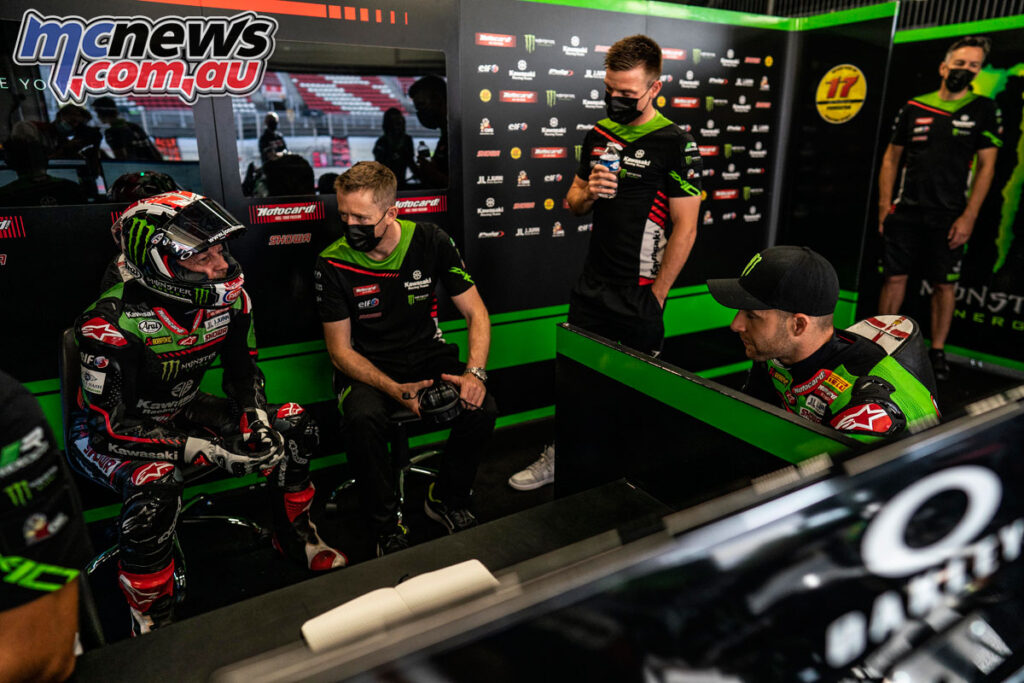The inner workings of KRT WorldSBK
KRT, Kawasaki’s official WorldSBK team, features not one but two World Championship winning crew chiefs, in the shape of Pere Riba and Marcel Duinker. We look here at just what it is they do and how they go about their multi-layered jobs.
The job of the crew chief is central to the final on-track performance of any individual rider. That is true of every team, of course. But inside the Kawasaki Racing Team, there are other elements to the job of crew chief which are partly due to the backgrounds of the two highly experienced and committed individuals in question.
Marcel Duinker, a characteristically tall Dutchman has some personal track riding experience augmented by a vast ocean of academic and direct engineering expertise in the world of two wheels.
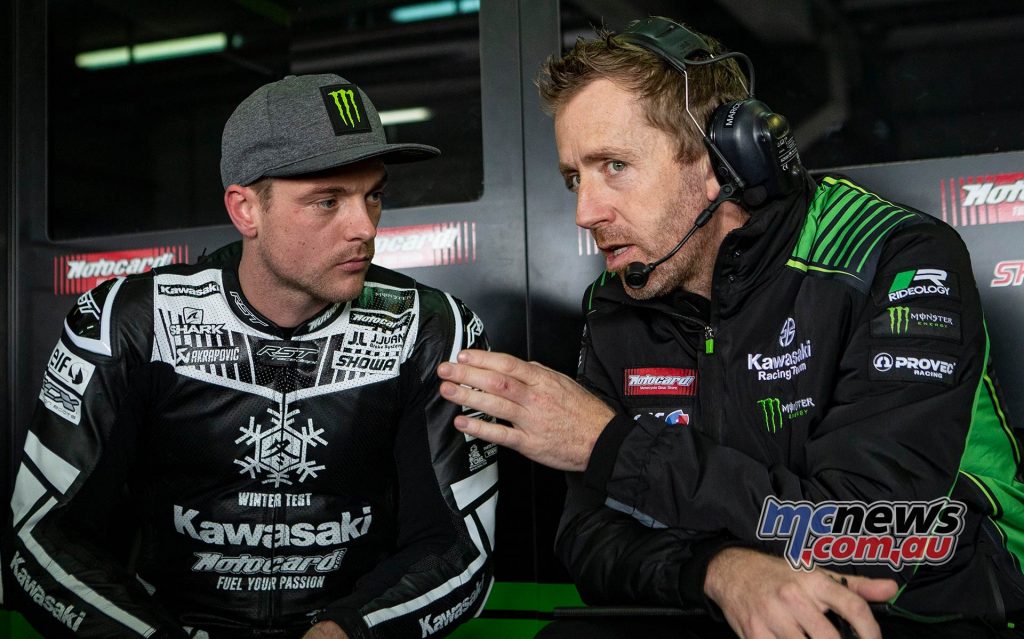
Duinker has worked in WorldSSP, MotoGP and now WorldSBK paddocks in one way or another, specialising in suspension before becoming a crew chief. He won the WorldSBK championship with KRT rider Tom Sykes in 2013, and along with other long-time Kawasaki staff, Tom and Marcel were an integral part of the overall design and race development of the Ninja ZX-10R and RR models since before the arrival of its current recognisable form.
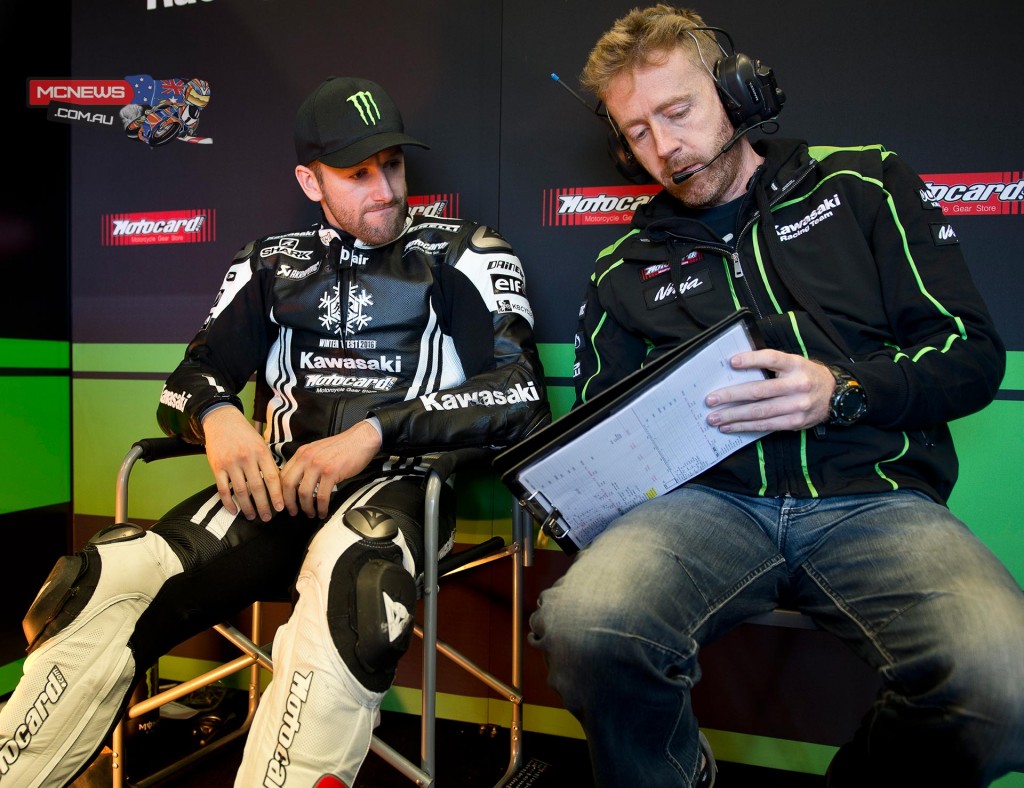
Pere Riba came into the role of crew chief after a career spent racing everything up to 500cc GP machines. He is a WorldSSP race winner but after his racing career eased off he became a test and development rider for Kawasaki and even rode a ZX-10R for a global advertisement.
Ultimately persuaded into becoming a crew chief, he has been in that role for many years now.
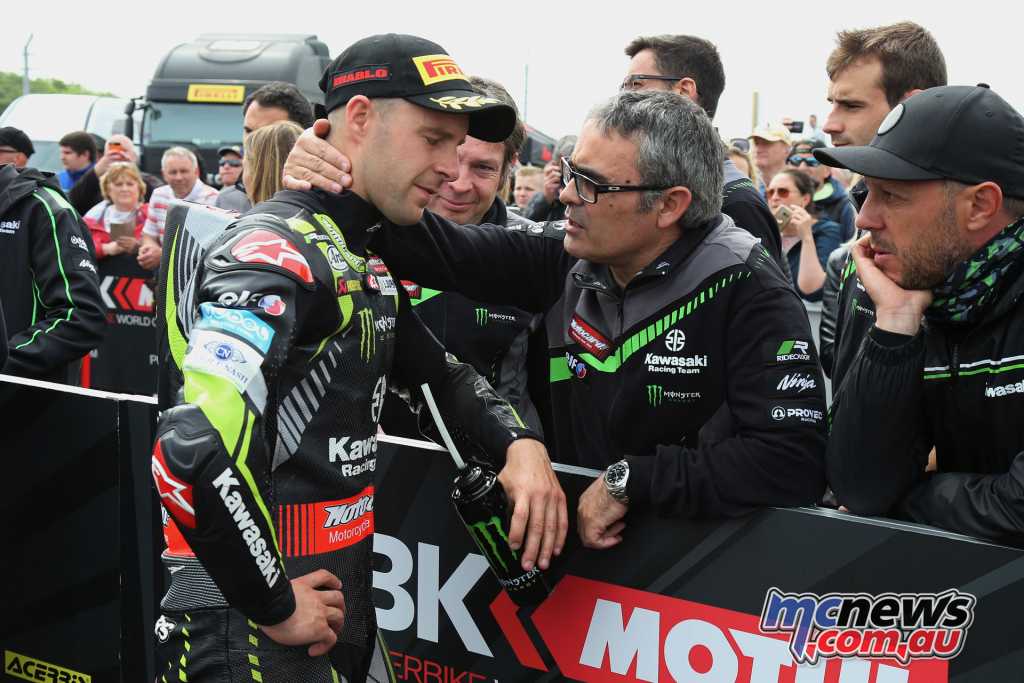
The engineer Marcel and the former rider Pere – as you might expect – have different approaches and theories on how to get the best out of their riders and machine set-ups and both approaches clearly work.
What is not so well known, especially when you see them urging their own riders on to beat all the others when the flag drops, is just how much technical co-operation and data sharing goes on inside ‘the KRT family’ all through the year, and at the end of each day of race or testing action.
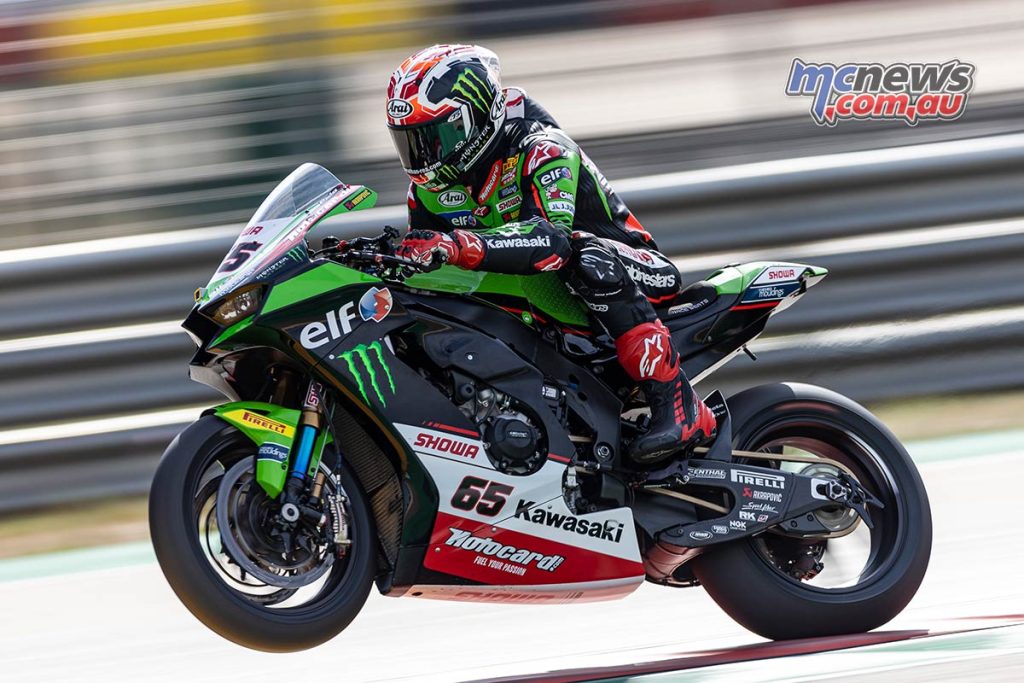
By means of an example, the team has recently completed a short test at Motorland Aragon, in very hot temperatures. Like every other test or race that data and feedback is shared in technical meetings, then this too is sent back to Japan in various forms, sometimes even via a live video link, face-to-face.
The big idea is to first of all make the overall effort a combined and doubly effective one, then worry about competition side when the tyre warmers come off.
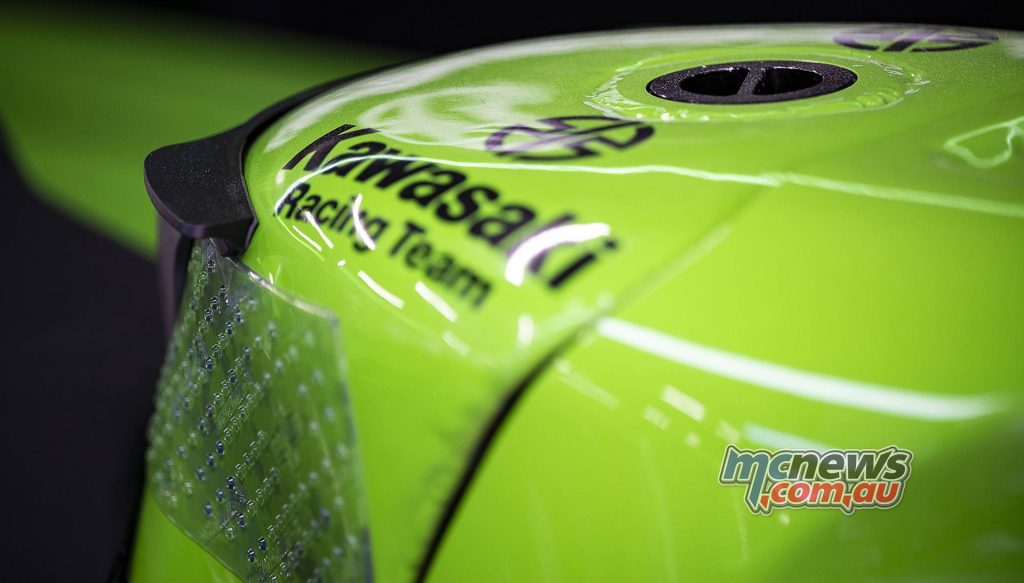
Kawasaki, it seems, puts a lot of trust in each of their crew chiefs. “Maybe it is a little bit different compared to other manufacturers,” said Pere, on his way home from the Motorland test. “There is Marcel and myself. I am responsible for Johnny, managing the people around him but especially the rider. Marcel is on the other side with Alex and in between is Ichiro Yoda-san. I speak to Mr Yoda about what Jonathan needs, following his riding style his feeling, his requests. I need to understand that and then together with Mr. Yoda we make the direction and request for what we need in Japan. On the other side of the garage Marcel is doing the same. In Japan they support us following Mr Yoda’s recommendations and information. He is usually at the track, together with Marcel and me. Marcel and myself are also really linked between the rider and the engineers in Japan – led by Mr Yoda.”
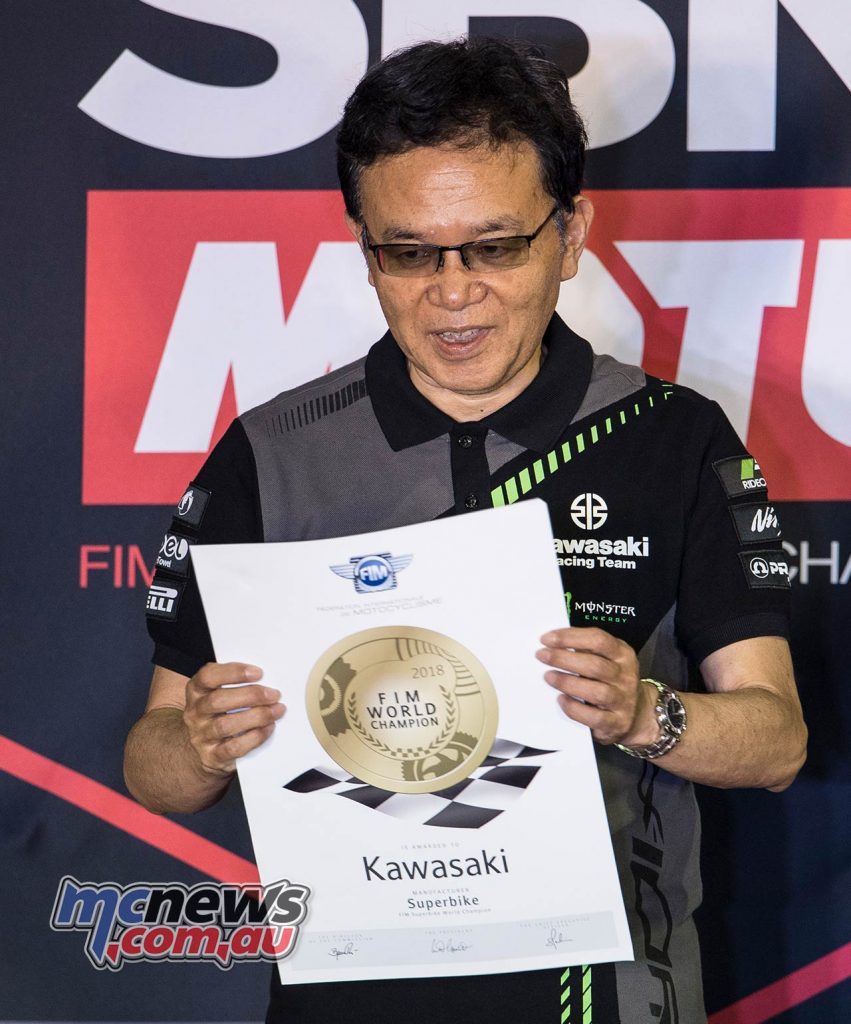
There are many similarities in the jobs of Pere and Marcel, of course, and Marcel expanded on what a crew chief does. “You are in charge of leading the team of mechanics, engineers and the rider. It’s important to create an environment where everyone is valued and understand their responsibilities. Performance, efficiency and continuity are the rules in racing. This is the key to success. Each riders’s crew consists of a number of people, each with their own profession. As a crew chief I am the leader of around 10 people. This includes our rider, mechanics, several engineers (electronics, suspension, engine) and more.”
The KRT effort on track usually starts with a pre-test or race technical meeting.
“Before the weekend starts we make a meeting,” said Pere. “We talk about engine rotation, and different items that are the starting point for the race weekend. After the first day, we make a technical meeting and Marcel says what adjustments he made on his bike then I say what I did on my bike; my conclusions, his conclusions. All these are given to Yoda-san and then to Japan. Saturday and Sunday – the same. I can see everything, and all data from Alex of course. But you really need to understand how each rider is riding because data is helpful if you understand it. I could say that Johnny and Alex ride the bike completely different. But in the end of the day the base can actually be similar, it’s the small details make the difference. And this is what I’m focusing 100 per cent with Johnny on, to understand what he needs. But of course Marcel knows what I am doing and I know what he is doing.”
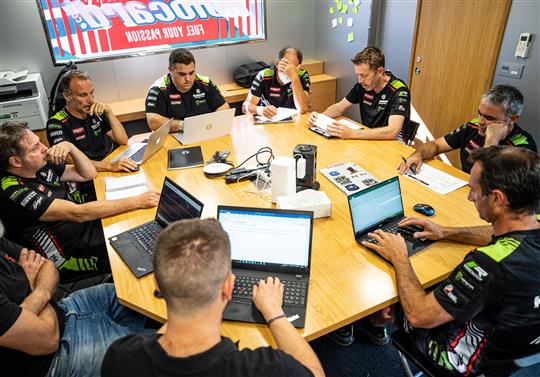
All these meetings and track sessions create a huge amount of information inside the team. Too much to use all the time, it transpires. “We are consistently faced with a tremendous amount of data, coming from dozens of sensors on the bike, riders’ feedback and not to forget the performance of our rivals which we note,” said Marcel. “All this data is monitored and saved, and will be used now and in the future for technical and strategic decisions. But every single team member is a walking database. Each individual is building heaps of experience in their field, which is the fundament of racing performance.”
The engineer comes out of Marcel when he says, “Racing is a pure engineering competition, where we push the laws of physics. The great challenge is to keep matters a simple as possible, picking only the essential data out of the overwhelming amount of information. Setting up the racing motorcycle during a race weekend is relatively easy in comparison to the continuous development necessary to keep our machine on top. This requires a strong mechanical engineering understanding.”
Finally, there is the relationship between the crew chief and the rider, inside and away from the pitbox or starting grid.
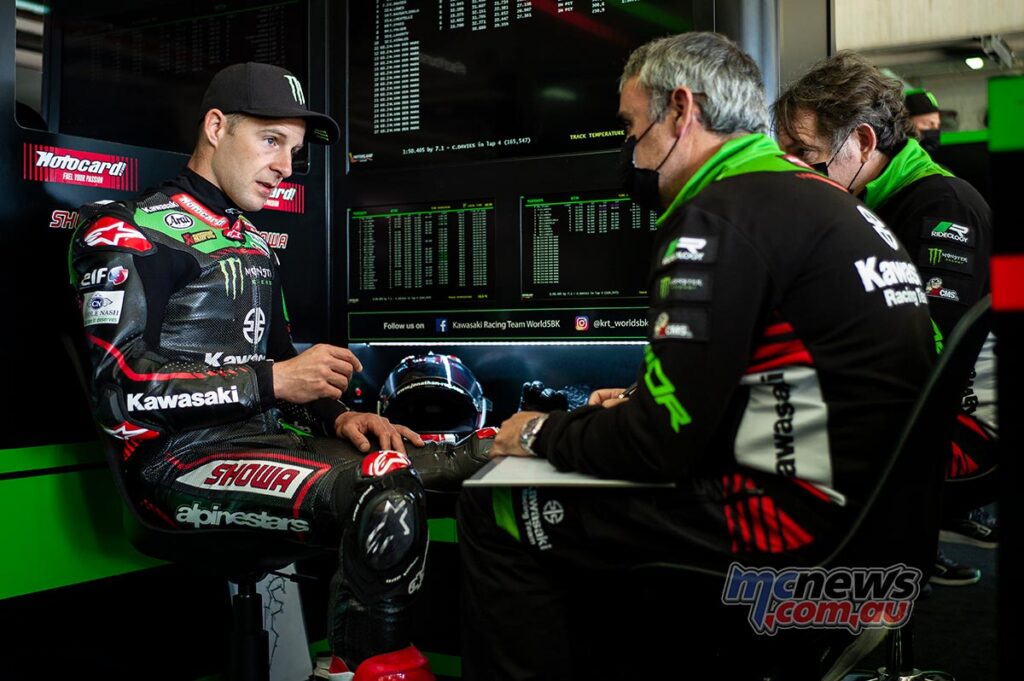
That working relationship, and personal relationship, is characteristically strong between Pere and Jonathan. After eight seasons it is verging on telepathic, in that sometimes they know exactly what the other is thinking or going to say next.
“I am coming from a riding background,” said Pere. “I have values, racing values. The most important is to understand the rider and to understand what the rider needs. In the end of the day the most important point is the rider. Even if technology moves ahead, and helps a lot, still now the rider is the most important. As a rider I knew how important it was to get the best feeling from everywhere.”
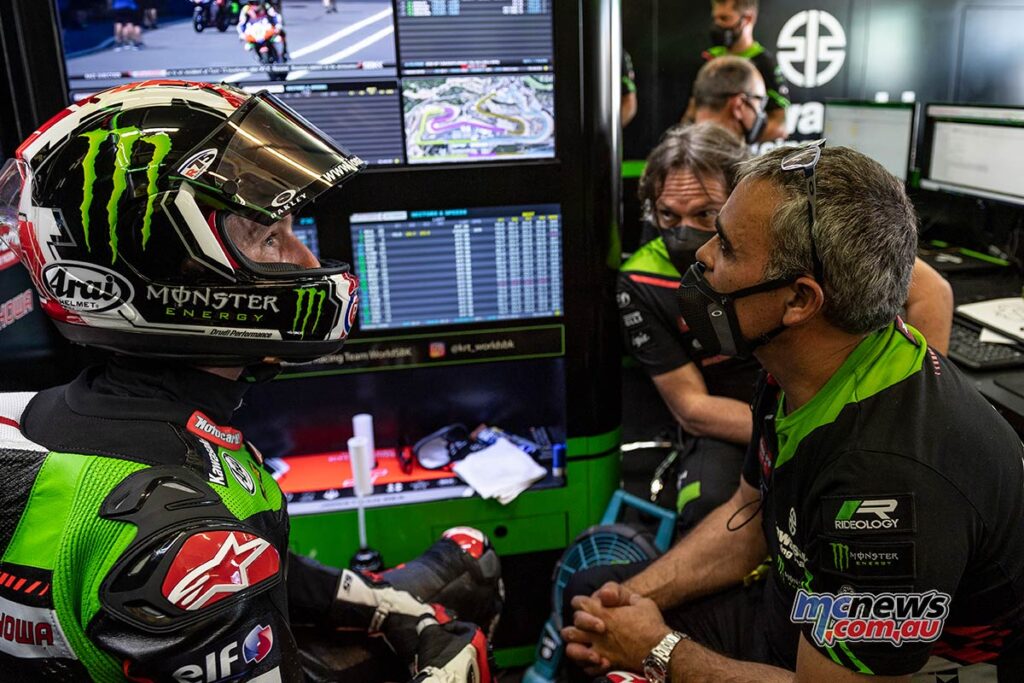
As far as his working relationship with Alex is concerned, Marcel said, “This relationship is crucial in this level of racing. Every piece of feedback between rider and crew chief will help dictate how quickly the team can understand the limitations, solve problems and optimise the strategies. We have a crystal clear goal, to win races and championships.”
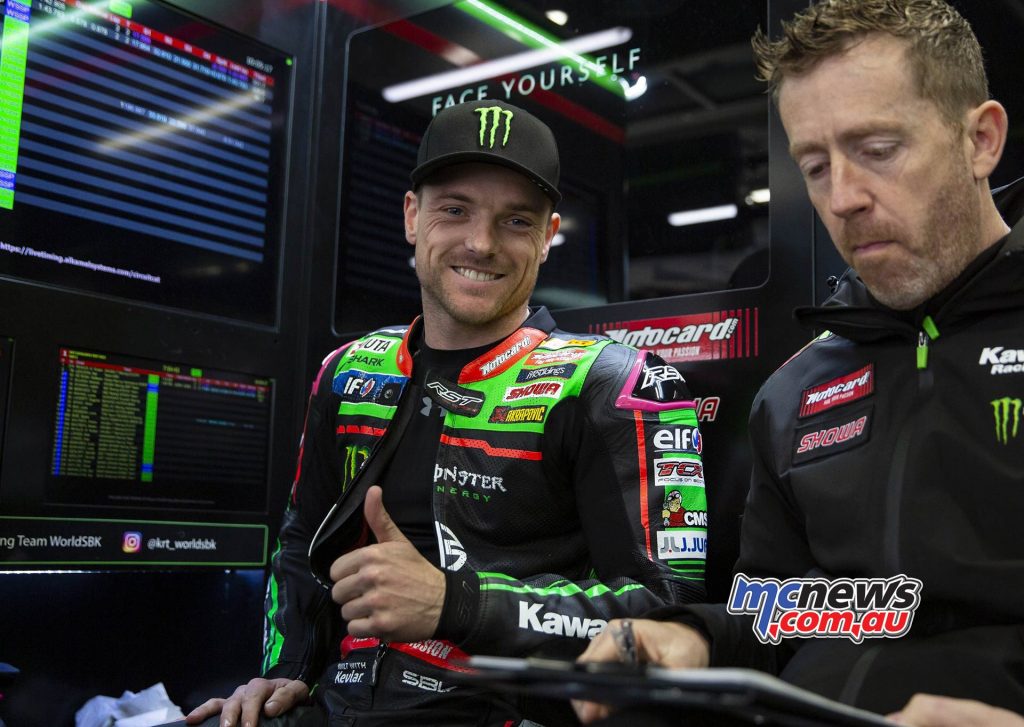
Each rider, of course, has strengths and weaknesses.
Pere sees Rea’s main strength is finding top level pace no matter what else changes. “For me, one of the reasons Johnny is a world champion that many times is because he has the skills to understand in every single situation. In front of different changes of rules, changes in a new homologation, or going up and down in peak revs. Johnny has crazy skills to understand every single situation, how to manage it and how to get the best from the package. And that aspect, I can tell you from a rider’s point of view, is very, very difficult to do.”
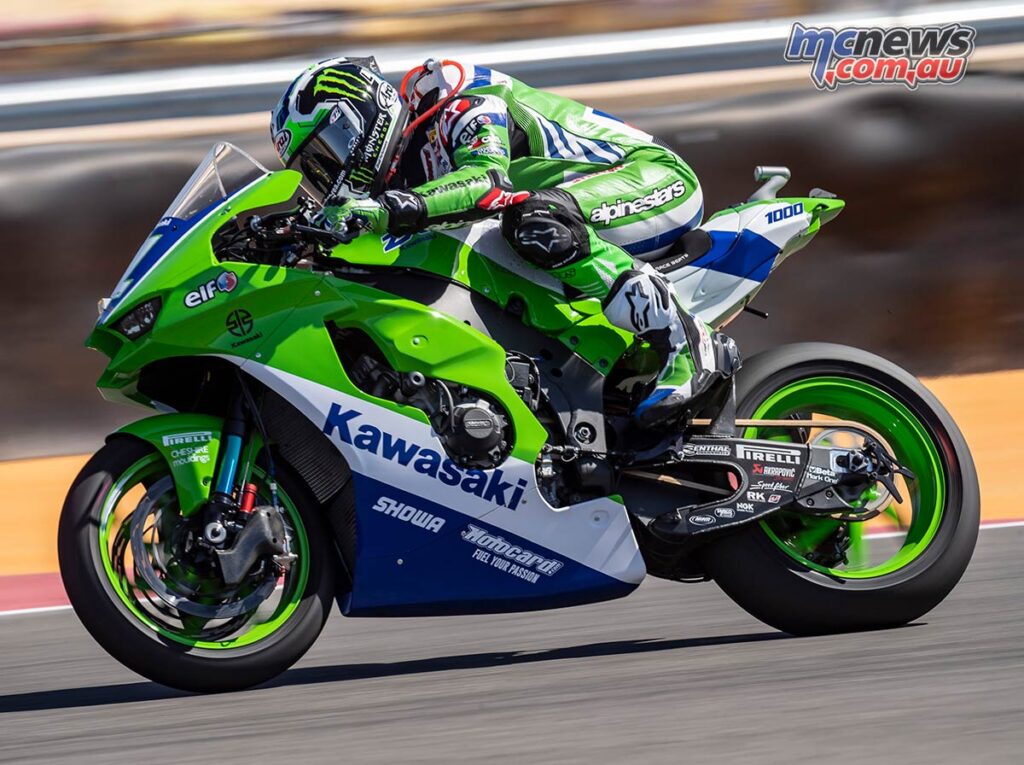
Speaking about Alex, Marcel explains his strengths thus. “Alex is an exceptional athlete. His motivation and determination for success is immense. He is a ‘real’ racer. Always able to extract his highest performance during each single race. And he has a big share in the recent development of the machine.”
And the biggest strengths of the Kawasaki? What about what is possibly the most stock WorldSBK bike in the class, after several recent regulation changes and limits?
“Johnny found a bike that very suitable to extract the best from the package,” said Riba. “Johnny requests smoothness and he requests entry corner stability. His lap times were coming easy, which means that the base of this bike is very suitable for his riding style. And we improved the bike, step-by-step. We never made a huge change or had a completely new bike since 2015. If you start from zero again you need years to understand the package.”
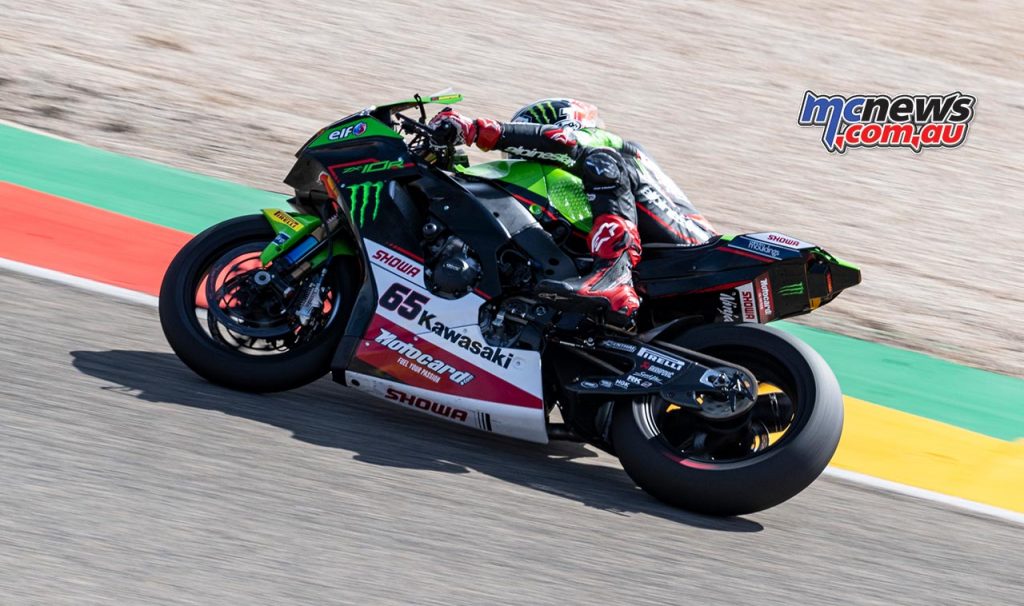
Marcel has another viewpoint on the bike’s positive points too. “Its strengths lay in being different in comparison to its closest rivals. Choosing different concepts in the field of engine configuration and other parts like suspension brand and electronic development. There is also a young and dynamic atmosphere inside KRT/KMC, which in the past allowed us to think outside of the box and explore different fields. We learned from our mistakes but were able to turn the ZX-10RR into a world class racing machine! It is an all-rounder, which it has demonstrated for over ten years. It has a high degree of stability and this translates into strong corner entry and exit performance. It is very strong at fast and flowing tracks.”
In terms of development for this year, concentration on making the bike work at any track, is and in any condition, seems key.
“Most development is done in winter times and many of these developments are eventually introduced and confirmed,” said Marcel. “Once you start to race and face your closest competition then you understand your weaknesses and strengths. The characteristics of each manufacturer’s bikes are much the same over all these years. We more or less know what to expect – but once the season starts these mid-summer tests are fundamental for further bike set-up for the remaining season.”
The Team Manager inside the KRT squad is Guim Roda, who has been at the helm for all of the team’s major successes in WorldSBK.
He is present in every aspect of team life, as the whole team is his immediate responsibility.
When asked how he sees the differences in approach and way of working between Pere and Marcel he said, “The main difference between them is the background they have in terms of experience. Pere is coming from a riding experience, with a good understanding of feelings and over the years – especially with Yoda-san’s support and assistance from more engineering and technical people inside the team – he has been improving his technical skills. Marcel is coming mainly from an engineering and suspension background and he, over the years, improved the way to understand the logic and feeling of the riders on the bike. So both have different ways to approach similar problems and it’s quite interesting at the end to have those various points of view inside the team.”
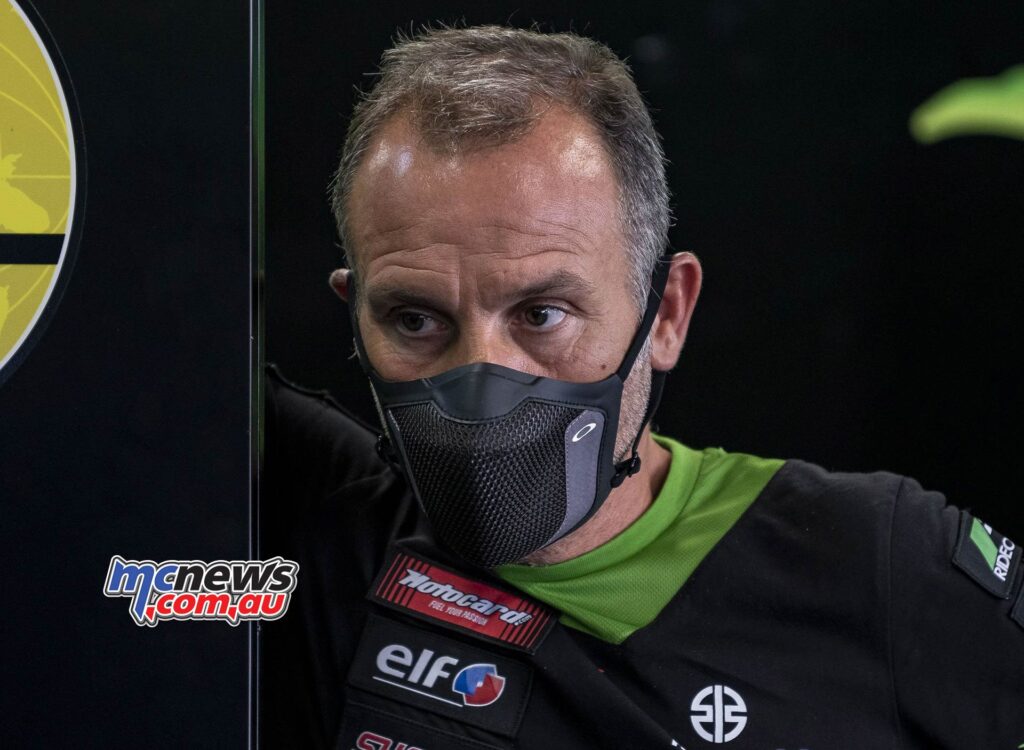
The impression you get after speaking to all concerned is that KRT seems very cooperative, in many ways. But once the racing starts, it becomes a rivalry on track to win each individual battle. And then the cycle of joint data sharing and feedback begins again afterwards.
Having spoken of his crew chiefs, Guim also mentioned the important role of Yoda-san. “You know, there’s a middle person in between both, which is Yoda-san. He is the one to filter information or give indications during race weekend of what one side is doing and what the other side is doing. This is mainly because sometimes when we try to respect competition between riders, we cannot forget that the crew chiefs need to do work for the best result of his own rider. So, sometimes, to help the ‘other side’ is obviously politically sensitive from a rider point of view. That is why Yoda-san is more like a middle point to give certain key information when needed. Other than that, in the technical meetings we explain the comments of the bike, the riders’ point of view, and what they have been working on, then each person responsible takes his own conclusions.”
Even with a final internal rivalry as the races start, Roda confirmed one important thing in Kawasaki’s continuing success.
“Data is open. We have a server and certain people in the team have access to all the server information. So they have any data from the bike set-up and they can check the telemetry from the other, and then explain to the rider different ways to ride the bike.”
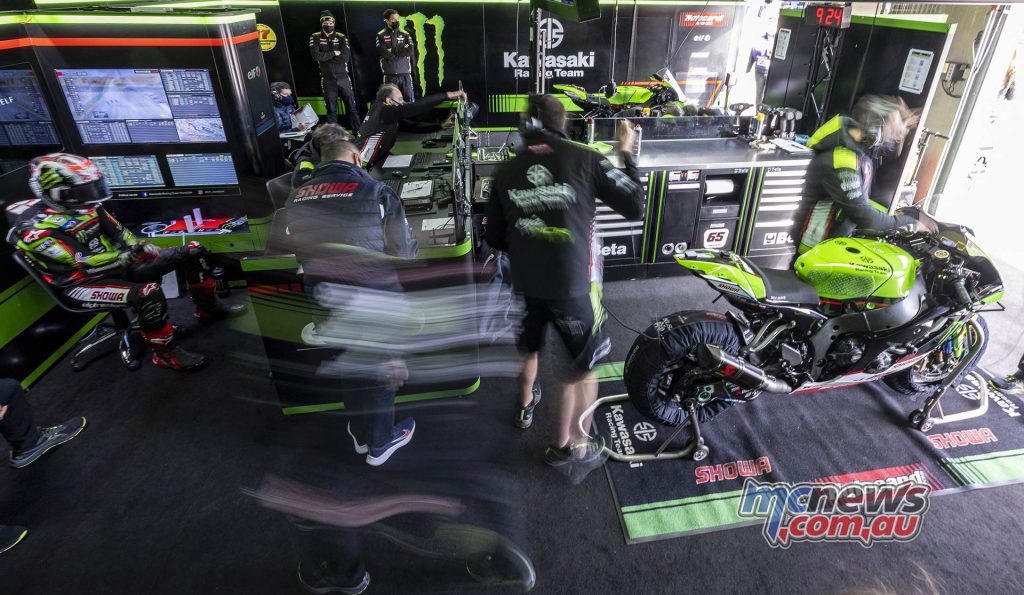
Another key technical person is the technical manager, Alvar Garriga. “His role is more to provide the necessary tools to the teams and crew chiefs, in terms of supplies and available parts to the crew chiefs,” said Guim. “There are four ‘windows’ providing information to Japan. The crew chief side directly to them, Yoda-san, directly to them and filtering information coming from the crew chiefs, and Alvar.”
The importance of which side of the garage provides the next development direction compared to the other is irrelevant to Guim, or KMC Japan, as long as it leads to improvement. As the years have progressed the tech regulations themselves determine a lot about what can be done to the bike itself, no matter where the feedback comes from within the team.
“Good info is good info,” said Guim, “and from that point of view we can give many kinds of info and many ways to explain the same problem. One of the changes from the past is because the rules are way more ‘tight’ now. Before, maybe we have more possibilities to modify the mass production bike in Tom Sykes’ era, from 2012, ’13, ’14. Then in 2015 and ’16 Dorna came up with more bike limitations. We needed to adjust to mass-production capacities and adjust to these rule changes. It is more difficult to make what we want on the bike to improve.”
Those more recent limitations do not make the job of the Crew Chief easier; you can say it is harder, as there are fewer things that can be changed to find that perfect set-up on track.
Between Pere and Marcel, Kawasaki clearly has two very different crew chiefs, but an enviable recent record of consistent and repeating success overall, no matter what challenges are thrown their way.
